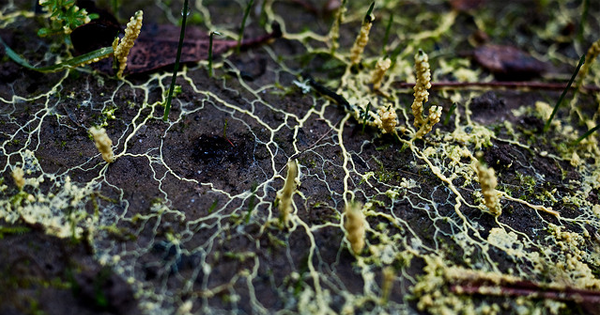
This spring was a wet one where I live. If the same goes for you, perhaps you’ve noticed a sprinkling of unsightly splodges coating leaves and stems in your flower bed or lawn. This is a slime mold, an ancient single-celled amoeba, similar to a fungus (using spores to reproduce), which lives in soils from Antarctica to the Arctic. For most of its life cycle, mold leads an unexceptional life, but sometimes it bands together in communities of thousands to form large shapeless blobs known as a plasmodium—an organism in its own right, encased in slime. It’s harmless and easily washed off with a hose, but before you exterminate this most primitive of life forms, consider how extraordinary it is.
An individual slime mold lives quietly, but once part of the blob, it is capable of incredible maneuvers and exploits. It can creep, crawl, pulsate, grow tentacles, and even negotiate a maze, seducing a substantial fan base of biologists eager to tinker with this most mundane research subjects. Their favorite is Physarum polycephalum, a yellow slime mold that conducts electricity. Scientists have wired it to a silicon-based circuit to create an interactive biocomputer, allowing technologists to get in on the act: Professor Eduardo Miranda, of Plymouth University in the United Kingdom, has performed a piano duet with a slime mold. Others have used the mold’s extraordinary ability to negotiate the shortest routes to map the Roman roads of ancient Britain.
The more we learn about the extraordinary skills of this most ordinary group of cells, the greater the parallels I see in our human communities. Individually, we may seem powerless to affect much beyond our immediate lives, but as a species—as humanity—we are altering the planet with unprecedented power. Humanity is changing the climate, the biodiversity of life, the chemistry of the atmosphere and oceans, global landscapes, and so much more. Like the blob, we are an extraordinary force. The challenge is to ensure that as individuals we are not as inconsequential as the amoeba in directing our powerful blob.

